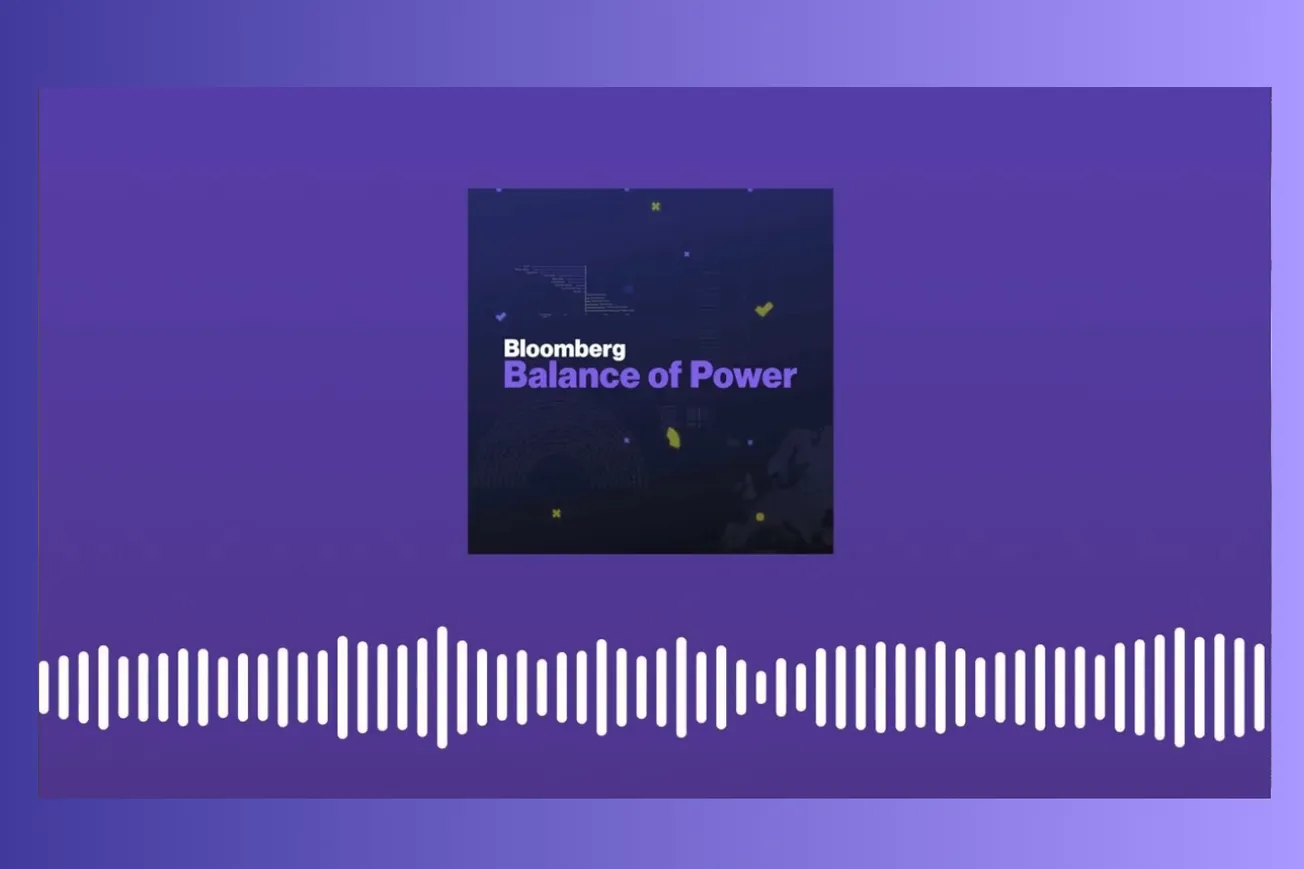Table of Contents
As America considers dramatic cuts to research funding while restricting international talent, China is systematically building its own version of the U.S. innovation ecosystem that has driven technological dominance for 70 years.
Key Takeaways
- The U.S. R&D ecosystem has delivered "some of the greatest benefits to humanity in the history of our species" but faces unprecedented threats from budget cuts and talent restrictions
- NSF faced an 8% budget cut last year, with potential 55% cuts proposed; NIH and DoD basic research also face significant reductions
- International students comprise 60% of computer science/AI PhDs and 50% of all STEM graduate students - a talent pipeline now at risk
- China has increased basic R&D spending by 10% year-over-year for seven years while explicitly copying U.S. institutions like national laboratories
- A leaked war mobilization exercise from Guangdong province reveals China's systematic preparation for converting civilian tech industries to military production
- Only 10-15 U.S. universities have endowments large enough to survive major funding shocks, threatening the broader research ecosystem
- China defines technology leadership as both cutting-edge capability and market dominance, pursuing "good enough" technology that can scale globally
- The 75-year-old Vannevar Bush model of federal-university-industry collaboration created America's technological superiority but requires constant replenishment
The Golden Goose: How America Built the World's Greatest Innovation Machine
To understand what's at stake in America's current R&D crisis, you have to appreciate the extraordinary success of the system built over the past 70 years. As Divyansh Kaushik explains, the foundational model was elegantly simple: "Universities would conduct curiosity-driven research funded by the federal government, and American industry was more focused on taking that research and putting it into applications."
This division of labor created something unprecedented in human history. The National Science Foundation funded Jeffrey Hinton's neural networks research during the 1970s-80s AI winter "when nobody was funding neural networks research because it was seen as a dead end and there was no application at all." That seemingly useless research became "the foundational technology behind all these large language models that you see" today.
Similarly, NSF funded Andrew Barto's entire PhD in reinforcement learning "at a time when there was little application of reinforcement learning" - work that now powers everything from ChatGPT to AlphaFold. These examples illustrate the fundamental challenge of basic research: "You do not necessarily have an application in mind right away but one may emerge however many years down the line."
- The U.S. model separated curiosity-driven research (universities) from application development (industry)
- Federal funding provided the patient capital necessary for basic research with no immediate applications
- This system generated breakthrough technologies decades after initial investment
- The ecosystem created 80% of the world's technology market capitalization
- American universities attracted global talent through superior funding and research quality
Alex Rubin provides crucial context about why this model works so well: "It's about $50 billion a year the US spends on basic R&D and then you get another 50 billion from universities and businesses. So like basically $100 billion a year." But the magic isn't just the money - it's how it's spent. America deploys only "25% of the world's basic funding but it's just spent in such a higher quality way than the rest of the world such that you do get the greatest global minds wanting to come here."
The Perfect Storm: Budget Cuts Meet Talent Restrictions
The threats facing America's R&D ecosystem aren't hypothetical - they're happening right now with devastating potential consequences. Kaushik outlines the scope of recent cuts: "NSF budget cut about by about 8% since the previous year. The NIST budget cut about 13%. DoD basic research budget cut about 4%."
But the real shock came with proposed future cuts. "Leaks from what the president's budget request might be where NSF could face about 55% budget cuts. NIH could face similar cuts as well." These aren't minor adjustments - they represent existential threats to the research enterprise.
The talent pipeline faces equally severe pressures. International students are crucial to American research capacity: "60% of computer science AI PhDs are international students, about 50% of all STEM PhDs and masters are international students." Yet international enrollment has already dropped 11% between March 2024 and March 2025, following immigration restrictions and policy uncertainty.
- NSF faces potential 55% budget cuts after already experiencing 8% reductions
- NIH and DoD basic research budgets under similar pressure
- 400 previously awarded NSF grants were terminated mid-stream
- International student enrollment down 11% year-over-year
- Only 10-15 universities have endowments sufficient to weather major funding cuts
The mathematics are stark. As Kaushik notes, "China has a population that's four times the US population. They produce twice as many STEM PhDs, twice as many STEM masters, four times as many STEM bachelors." The only way America can compete is "by recruiting a rest of the world team here just based on the numbers. They have way more bodies to throw at hard problems than we do."
Meanwhile, countries like France and Australia are actively capitalizing on American dysfunction "by establishing specific programs for US researchers who want to move to those countries and build there conduct research there provided long-term stability in funding and residency."
China's Strategic Mimicry: Copying the Golden Goose
While America debates cutting its research investments, China is systematically attempting to replicate the very system that made America dominant. Alex Rubin describes Xi Jinping's approach with a memorable phrase: "Xi Jinping's planning to science the shit out of China. That's his big approach. He's going all in on this bet."
This isn't rhetorical flourish - it's backed by concrete action. "China has increased its basic R&D spending by 10% year-over-year for seven years" while explicitly studying American institutions. As Kaushik notes, "The Chinese 13th 5-year plan explicitly calls out like Argonne, Los Alamos, Lawrence Berkeley National Labs as crown jewels of U.S. innovation and how China wants to mimic the US national laboratory system."
China's strategy encompasses multiple dimensions that mirror American strengths:
- Economic Integration: Xi's "new quality productive forces" doctrine focuses on using technology to upgrade traditional manufacturing, eliminate dependence on foreign suppliers, and dominate future industries like "humanoid robots, quantum technologies, artificial general intelligence, brain computer interfaces."
- Social Control: Technology becomes the solution for maintaining stability through "AI based tools to improve surveillance whether it's facial recognition, gate recognition, voice recognition, predictive analysis."
- Food Security: Even agriculture gets the tech treatment, with "technology based solutions" to address China's chronic concerns about feeding its population.
- China explicitly models its national laboratory system on U.S. institutions
- Basic research funding increases 10% annually while U.S. funding stagnates or declines
- Technology integration spans economic, security, and social applications
- Long-term strategic planning contrasts with American short-term budget cycles
The talent dimension is particularly concerning. Rubin emphasizes that "you can build out the best infrastructure in the world, you can fill it with the best equipment in the world, you can give it as much money as you want, but if you don't have the people that know how to use the equipment then it does nothing for you."
Quote Analysis: The Fragility of Greatness
Two quotes from the conversation capture both the magnitude of what's at stake and the urgency of the current moment:
"American R&D is the envy of the world and we should honestly double down on it... At the same time, they're not blameless in a lot of manners, and they need to do some self-reflection as well on why our commitment to academia and to our universities is in question today."
This quote from Kaushik reveals the complex challenge facing American research institutions. The system has produced extraordinary results - creating the modern technological world - but has also become vulnerable to political attack. Universities bear some responsibility for losing public support through perceived elitism, questionable spending priorities, and failure to communicate their value effectively. However, this acknowledgment of institutional flaws doesn't diminish the strategic catastrophe that would result from dismantling the system. The challenge is reform and improvement, not destruction.
"We underestimate China's ability to out hustle everybody... We have an uncanny ability of underestimating China's ability to out hustle everybody."
This observation cuts to the heart of strategic competition. American confidence in technological superiority often blinds policymakers to the relentless effort China invests in catching up and surpassing U.S. capabilities. China's systematic approach to copying American institutions while scaling them with vastly more resources represents a direct challenge to U.S. dominance. The "Made in China 2025" plan wasn't aspirational - "they met every single objective there." Similarly, their AI 2030 goals aren't hypothetical - "they are there" where they said they would be by 2025. This track record of execution should inform American strategic planning rather than complacent assumptions about permanent technological leadership.
The Good Enough Revolution: China's Market Dominance Strategy
One of the most important insights from the conversation concerns China's approach to technology competition. While America focuses on cutting-edge research and Nobel prizes, China pursues a dual strategy that combines frontier research with "good enough" technology scaled for global markets.
Rubin explains this distinction: "The US defines technology leadership as who has the most advanced technology, who is the one leading cutting edge research. China defines technology leadership as that plus who dominates the markets, who owns most of the world's markets for these key technology products."
The Huawei case study illustrates this approach perfectly. For years, Huawei "wasn't seeking to be the world leader in telecommunication equipment. It was seeking to develop technology that was just good enough and it was offering it to countries that couldn't afford the best that the US had to offer." This strategy focused on emerging markets in the Global South with "technology that achieves 80% of the capability at 80% of the cost."
- China targets market dominance, not just technological superiority
- "Good enough" technology captures markets that can't afford premium solutions
- Revenue from emerging markets funds R&D investments for cutting-edge technology
- Scale advantages eventually enable technological leadership
- The U.S. risks losing both market share and technological edge
The genius of this approach became clear over time. By building market share through lower-cost solutions, Huawei generated revenue that it reinvested in R&D - reportedly spending around 50% of revenue on research, far exceeding industry norms. This created a virtuous cycle where market success funded technological advancement, eventually positioning Huawei as a leader in 5G technology that was "both better and cheaper than what competitors were offering."
The strategic implication is sobering: "The US found itself for the first time in its modern history where it was at the precipice of a major infrastructure buildout critical technology... It didn't have a US company and it was facing a Chinese company that was just as good and was cheaper."
War Games and Industrial Mobilization: The Guangdong Exercise
Perhaps the most revealing insight into Chinese strategic thinking comes from a leaked transcript of a war mobilization exercise in Guangdong province from May 2022. Rubin describes it as "a tabletop exercise, like a war mobilization tabletop exercise" involving "representatives from the party, from the military, from the government."
The scenario was stark: "We've decided to invade Taiwan. Like what does the province do?" But rather than focusing on military tactics, the exercise emphasized economic mobilization: "How are we going to mobilize the population and mobilize the economy and industry?"
The exercise detailed "mobilizing and converting civilian manufacturing industries commercial manufacturing industries over to wartime production" across multiple sectors including "drones, called out other high-tech industries." This represents systematic preparation for leveraging China's massive manufacturing capacity for military purposes.
- Provincial-level war mobilization exercises test economic conversion capabilities
- Civilian tech industries prepare for wartime production roles
- The approach mirrors U.S. World War II mobilization strategies
- China's manufacturing capacity becomes a strategic military asset
- Systematic preparation occurs at multiple administrative levels
Rubin emphasizes the scale: "County prefectural level, like that's the equivalent of folks over in like Fairfax County to be local to DC, like the city of New York thinking through how it would mobilize in the event of a conflict." This isn't theoretical planning - it's practical preparation with concrete exercises testing actual capabilities.
The implications extend beyond military conflict. China's ability to rapidly redirect civilian production capabilities gives it significant leverage in economic competition and crisis response. The COVID-19 pandemic provided a preview when China quickly scaled production of medical equipment and supplies, demonstrating the strategic value of maintaining broad manufacturing capacity.
The Intelligence Community Gap: Why Independent Analysis Matters
An important dimension of the conversation addresses how independent research organizations like China Talk complement official intelligence community work. Rubin explains that when it comes to commercial technology, "fundamentally, we're talking about commercial technologies... we are talking about actors that are commercial entities, companies, academia."
This creates unique challenges for traditional intelligence analysis. Unlike military secrets that require classified collection, commercial technology development largely occurs in the open. "So much of the key insights that might be technological in nature but can have significant strategic implications are rumors circulating within industry or insights that a company is gaining from talking to a customer or talking to a partner."
The openness of commercial technology creates both opportunities and blind spots:
Information Availability: Chinese companies actively promote their technological achievements through industry press and marketing because "they want to be seen... They want to push out that message of technological advancement and development."
Industry Networks: "Relatively everybody knows each other" in key technology sectors, creating informal information networks that official channels might miss.
Strategic Implications: "Small technological developments but massive strategic implications" require deep technical understanding combined with strategic analysis.
- Commercial technology intelligence differs fundamentally from military intelligence
- Open source analysis can capture 90-95% of strategically relevant information
- Industry networks provide crucial insights unavailable through official channels
- Independent analysis fills gaps between technical developments and strategic implications
Rubin estimates that for commercial technology, "90 even 95% of what you would need... at a larger strategic level of like what does this mean for America? What does this mean for industrial policy?" can be obtained through open sources, particularly given "the relative openness of the Chinese media ecosystem when talking about commercial technologies."
The Ecosystem Under Stress: Beyond Universities and Labs
While much attention focuses on elite research universities and national laboratories, the conversation reveals that America's R&D ecosystem extends far beyond these visible institutions. Rubin emphasizes that "the R&D ecosystem is even broader than that. It includes community colleges... These are pumping out the technicians, the ones that are actually running the equipment in these labs."
This broader ecosystem includes several critical components:
Community Colleges: Provide technical training for equipment operators and technicians who actually run laboratory and manufacturing equipment.
Technical Training Programs: Generate skilled workers for high-tech manufacturing, including "a pretty significant veteran population in the semiconductor industry like hiring a bunch of former mechanics because they've got the requisite skills."
K-12 Education: Forms the foundation for future technical literacy, requiring "slowly over time building technical literacy to the point where when you get to an undergraduate program or a graduate program, your math and your science skills are already at par with where the rest of the world is at."
- Technical education provides essential workforce for high-tech industries
- Community colleges train equipment operators and technicians
- K-12 education builds foundation for future technical careers
- Veterans bring mechanical skills applicable to high-tech manufacturing
- The ecosystem requires coordination across all educational levels
The Trump administration has shown some recognition of these broader needs, with Kaushik noting "the AI in K through 12 executive order came out recently which very much tries to steer the education system to better incorporate AI education and AI in education through K through 12 to make sure that we have an AI ready workforce."
The Path Forward: Reform vs. Revolution
Despite the serious challenges facing America's R&D ecosystem, there are reasons for cautious optimism. Michael Kratsios's recent speech at the Endless Frontier retreat outlined a vision for what Kaushik calls "a golden age for America" through reformed approaches to federal R&D spending.
The reform agenda focuses on "rethinking how we do federal R&D spending... smarter ways to do it" through mechanisms like "new experimentation, prize competitions" and "advanced market commitments." The goal is getting "the most juice out of every dollar that we spend on R&D" rather than simply maintaining status quo approaches.
Importantly, research agencies themselves are embracing change. "The agencies are very much open to that," Kaushik notes. "The National Science Foundation created the TIP directorate before Congress even passed Chips and Science Act." The Department of Energy national labs are "experimenting with open AI's models as scientific peers for brainstorming."
Promising Reform Directions:
- Improved efficiency metrics focusing on return on investment rather than input spending
- Experimental funding mechanisms including prizes and competitions
- Advanced market commitments to provide demand signals for innovation
- AI-assisted research tools to accelerate scientific discovery
- Better coordination between agencies to avoid duplication and maximize impact
The key insight is that reform requires "carrots" rather than "sticks" - positive incentives that make the system more effective rather than punitive cuts that simply reduce capacity. As Caleb Wattney's observation suggests, "If you were to see federal R&D from a VC lens... you have to measure the rate of return on the investment... rather than how little you invested."
Looking Ahead: The Generational Stakes
The conversation concludes with a sobering assessment of the generational stakes involved in current R&D policy decisions. Rubin emphasizes that "it's a generational investment... If you make decisions now that underinvest in research... You know, the real impact you might not really see for 10-15 years from now, but it's also once you start to see those impacts, it's kind of too late."
This time horizon creates particular political challenges. The benefits of basic research investments appear decades after initial funding, while the costs are immediate and visible. Politicians face pressure to deliver short-term results, making long-term investments difficult to sustain.
Meanwhile, China operates on longer time horizons with consistent strategic direction. Their systematic approach to building research capacity, copying successful American institutions, and scaling up their investments creates cumulative advantages that compound over time.
The Generational Choice:
America stands at an inflection point where decisions made now will determine technological leadership for decades to come. The Vannevar Bush model that created American dominance worked because it maintained consistent support for basic research, attracted global talent, and fostered collaboration between universities, government, and industry.
Critical decisions ahead:
- Whether to maintain federal research funding at levels necessary for global competition
- How to balance security concerns with the talent attraction that drives innovation
- Whether to reform research institutions while preserving their essential functions
- How to sustain bipartisan support for long-term investments amid short-term political pressures
- Whether America can match China's systematic approach to building research capacity
The stakes couldn't be higher. As the conversation makes clear, America's R&D ecosystem represents "some of the greatest benefits to humanity that have been created in the history of our species." It's also "the golden goose of all golden geese" that enabled America to become "the richest country in the history of the world."
The question now is whether America will choose to nurture and reform this extraordinary system, or allow it to wither through neglect and misguided policy choices. China's systematic efforts to replicate and scale American innovations provide a sobering reminder that technological leadership isn't permanent - it requires constant cultivation and strategic commitment.
The Guangdong war mobilization exercise offers a final insight: while America debates whether to fund basic research, China prepares to mobilize its entire industrial base for strategic competition. The outcome of this generational choice will determine not just American prosperity, but the global balance of technological power for decades to come.





